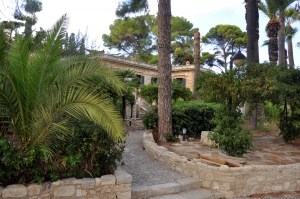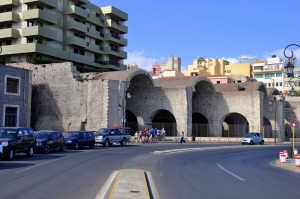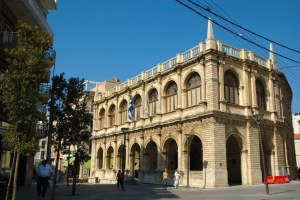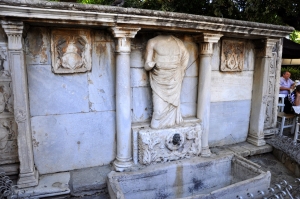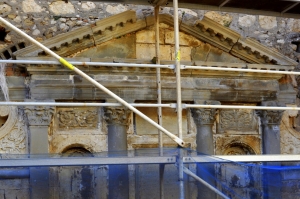The imposing medieval fortress of Koules still stands at the beginning of the western breakwater of the modern port of Heraklion. Its real name is Rocca al Mare, named so by its Venetian founders. Koules, or the Great Koules like it is called, was not the sole ruler of the port.
The grave of the important Cretan writer Nikos Kazantzakis (1883-1957) is located at the highest point of the Walls of Heraklion, the Martinengo Bastion, with panoramic views to the ugly, but also historical, concrete jungle of Heraklion.
The Villa Ariadne was built in 1906 to reside archaeologist Arthur Evans and during the Second World War housed the German commander of Crete. Here was signed the delivery of Crete to the Allies.
At the port of Heraklion we see even today part of the shipyards (arsenals) consisting of large elongated domed rooms. They are the shipyards of the Venetians where they housed, stored, constructed and repaired their ships.
The fountain of Morozini (known as Lions) is one of the nicest Venetian monuments of Candia (current Heraklion). The fountain was watered by the spring of Karidaki and the watered traveled about 15km in a gigantic aqueduct, one of the longest in the then world.
The Venetians used to build a luxurious building in each of their cities, where the nobles could pleasantly spend their time and socialize. In Candia, they built the Loggia (meaning Noble Club) which is now met on the August 25 street.
On the north side of the Kornarou square we meet the Venetian Bembo Fountain and the Turkish sebil (charity fountain) built later. The fountain was constructed between the years 1552-1554 during the rule of the captain Gian Matteo Bembo, who first watered Candia with spring water via aqueduct.
Priuli Fountain or Fontana Nuova is located at Delimarkou Street, behind the Bodossakio School and opposite the Venetian gate of Dermatas. It was built near the end of the great siege of Candia (1648-1669), after the Ottoman besiegers interrupted the water supply from the aqueduct that carried water from Youchtas area.














